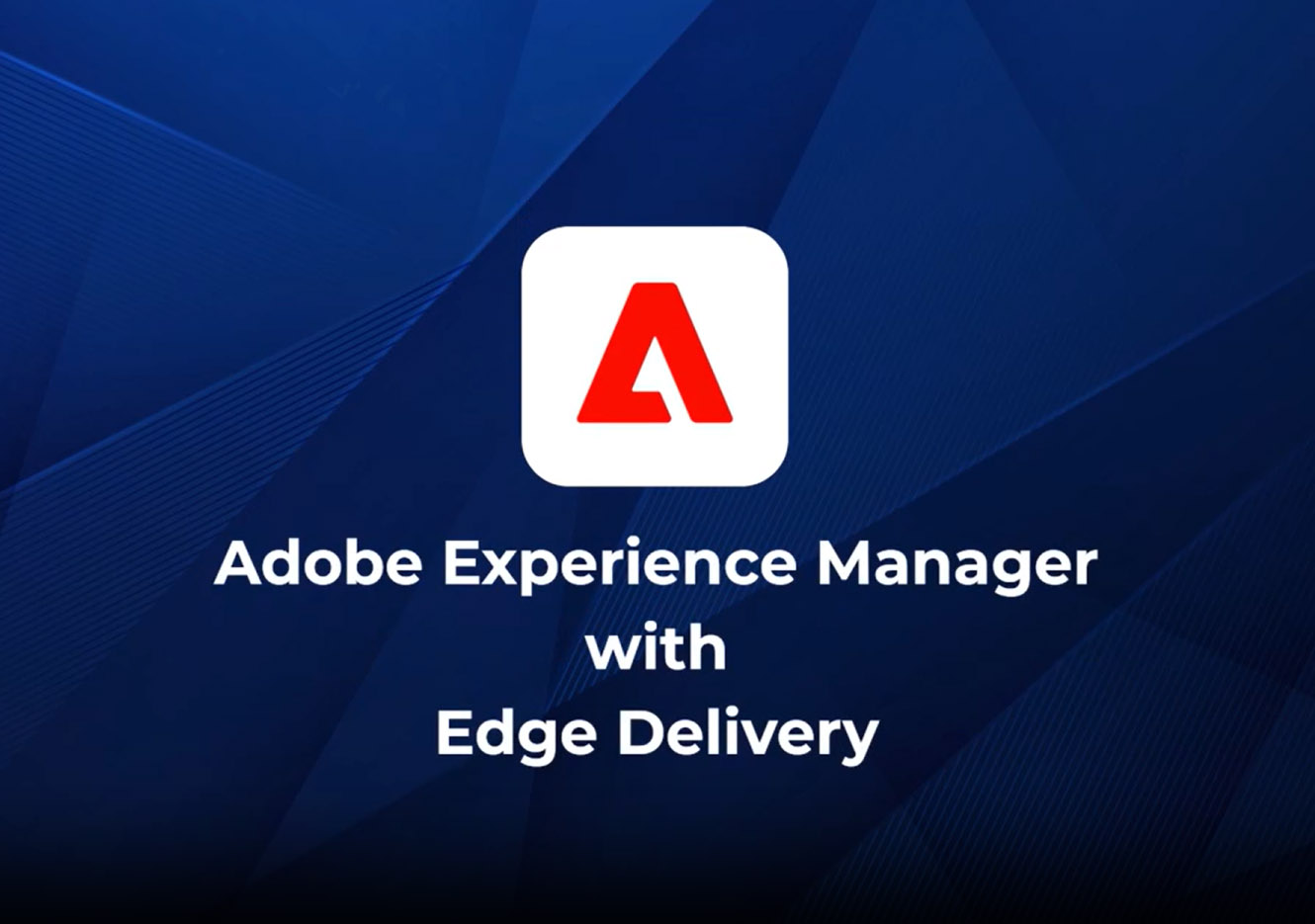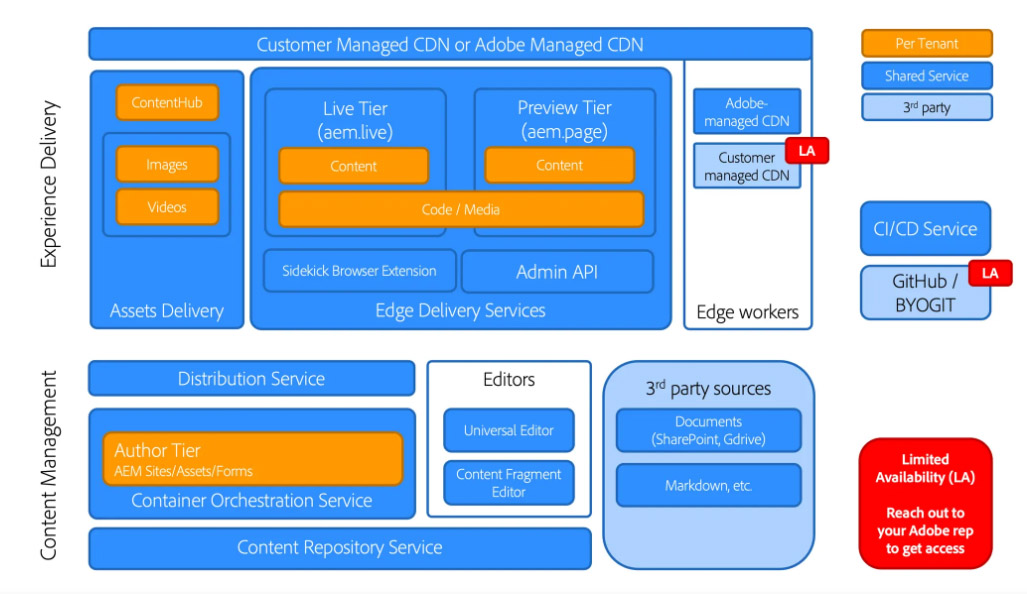
A Complete Introduction to AEM Edge Delivery Service and Its Advantages
Content Management System (CMS)
26 November 2025
1. Overview and How It Works
AEM Edge Delivery Service (EDS) is a set of edge delivery services introduced by Adobe Experience Manager in recent years. It reimagines how websites are built and delivered, focusing on speed, simplicity, and scalability.
Traditional AEM publishing environments consist of authoring and publishing instances, relying on Dispatchers and server-side rendering. In contrast, EDS adopts a pure front-end, multi-cloud SaaS architecture, pushing both content and rendering logic to the network edge. This significantly reduces server response times and enhances user experience.
EDS is not a replacement for a CDN, but a framework that integrates seamlessly with existing CDNs. It supports content aggregation, management, and deployment across multiple sources, and allows direct code and content management via GitHub repositories.
2. Core Features and Capabilities
Edge Delivery Service offers a modular set of features designed to empower both content teams and developers to work more efficiently:
Cross-Source Content Integration
Publish content directly from AEM Sites, SharePoint, Google Drive, and other systems. Authors can use familiar tools like Microsoft Word or Google Docs to create and publish without learning new platforms.
Universal Editor (WYSIWYG Editing)
A customizable visual editor that supports live preview and workflow governance, enabling efficient authoring in both headless and traditional modes.
GitHub-Driven Deployment
Code and content are managed in GitHub repositories, and any updates are automatically deployed to production—eliminating lengthy rebuild cycles.
Composable Architecture
Supports both headless and headful delivery models. Developers can build pages using standard HTML, CSS, and native JavaScript, integrating with existing tools and pipelines via extension points.
Real User Monitoring (RUM)
Collects real user data such as page load times and interactions, helping teams continuously optimize content strategy and user experience.
Edge Caching and Staged Loading
Divides content into three load phases—Eager, Lazy, and Delayed—while caching frequently used elements (like headers, footers, and navigation) at the edge to accelerate content rendering.

3. Key Advantages: Speed and Efficiency
Organizations adopting Edge Delivery Service can expect significant benefits in the following areas:
Exceptional Loading Performance
By delivering content and rendering closer to the end user, websites achieve higher Lighthouse scores and improved SEO visibility.

Enhanced Developer Productivity
EDS provides a simplified front-end development environment with no complex build or packaging tools. Developers can set up environments within hours and deploy faster.
Rapid Deployment and Real-Time Collaboration
With GitHub branch-based workflows, development and content teams can create, test, and share changes instantly—shortening feedback loops and accelerating project timelines.
Reduced Costs and Simplified Processes
The document-based content model reduces dependency on traditional CMS structures, lowering maintenance complexity. Even non-technical teams can publish directly through Word or Google Docs.
Scalability and Seamless Integration
EDS can coexist with AEM Sites, supporting multilingual and multi-regional deployment, while integrating smoothly with Adobe Target and other Experience Cloud products within the same domain.
4. Ideal Use Cases and Best Practices
Edge Delivery Service is ideal for organizations looking to boost website performance, streamline content workflows, or enable rapid experimentation and iteration. Typical use cases include:
Large Enterprises or Global Brands
High-traffic or multinational sites benefit from edge caching and RUM for improved user experience and multi-language support.
Content-Focused Organizations
Distributed teams or companies that prefer using familiar office tools can leverage EDS’s document-based authoring to reduce the learning curve and shorten time-to-publish.
Hybrid CMS Environments
Since EDS is part of AEM, it can coexist with AEM Sites, allowing a gradual migration to edge delivery while integrating with other CMS or commerce platforms.
Digital Products Requiring Fast Iteration and A/B Testing
With RUM and experimentation tools, teams can monitor real user behavior, test variations, and make data-driven optimizations to improve conversion rates.

5. Conclusion
AEM Edge Delivery Service introduces a new approach to content publishing, bringing rendering and delivery closer to the network edge while maintaining high speed and flexibility. Through its WYSIWYG editor, document-based authoring, GitHub-driven deployment, and real-user monitoring, EDS streamlines both development and content management without compromising performance or scalability.
For organizations aiming to iterate quickly, enhance SEO, or reduce operational costs, Edge Delivery Service is a powerful and future-ready solution worth exploring.
If you’d like to learn more about Edge Delivery Service or discuss implementation options, feel free to contact our consulting team through our Contact Us page — we’re here to help.
Further Reading: To explore more about Adobe Experience Manager’s features and use cases, visit our AEM Product Page.


